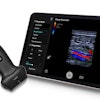(Ultrasound Review) Researchers at the University of Washington Medical Center compared cervical length measurements using transvaginal and translabial ultrasound in this study recently published in Obstetrics & Gynecology.
Cervical length measurements in early pregnancy are used as a predictor of premature delivery. Transvaginal determination of length is the more commonly used method, but requires a transducer specially designed for endocavity use.
Instances may arise where transvaginal imaging is unacceptable or the patient declines this method of approach. In situations where translabial is the preferred method, can the measurement limits determined using transvaginal scanning be utilized with accuracy?
In order to answer this question, 80 women each had three cervical measurements using both methods, and the measurements were averaged. A 3.5-MHz curved-array probe was used for the translabial scans, and the transvaginal images were obtained using a 6.5-MHz transducer. There was little variability between the three measurements taken for each method.
Results showed that there was a mean difference in cervical length ranging from 1.75 cm to 1.01 cm, and these limits were greater than the acceptable difference of 0.5 cm. Technical difficulties encountered using the translabial approach included image degradation due to maternal obesity and shadowing artifact from rectal gas or the symphysis pubis that shortened the length measurement.
There was no consistency in measurement inaccuracy that could be adjusted for. There were 84 patients enrolled in the study; however, a translabial measurement was possible in only 80 women. A previous study by Iams et al determined that the relative risk of premature delivery increased approximately 1.5 times as cervical length decreased by 0.5 cm. The authors therefore considered "a difference of 0.5 cm or greater in cervical length measurement between the two techniques to be clinically unacceptable on the basis of these findings." They concluded "more agreement between translabial and transvaginal ultrasonography is needed before these techniques can be used interchangeably to measure cervical length."
"Ultrasonography for cervical length measurement: agreement between transvaginal and translabial techniques"
Darcy B Carr et al
Dept of Obstetrics and Gynecology, Division of Perinatal Medicine and Diagnostic Imaging at the University of Washington School of Medicine, Fred Hutchinson Cancer Research Center, Seattle, WA, USA
Obstet Gynecol 2000; 96: 554–558
By Ultrasound Review
February 21, 2001
Click here to post your comments about this story. Please include the headline of the article in your message.
Copyright © 2001 AuntMinnie.com



















